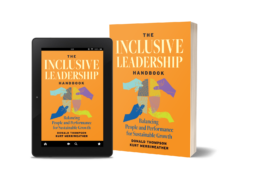Employees may need to take leave for a variety of reasons, some positive, such as welcoming a new child, and some negative, such as grieving or facing hardship. When facing any personal upheaval, even if it’s positive, the last thing a person wants to face is fighting for fair time off. Inclusive leave policies ensure that all employees feel seen and supported by the organization when they need it most. That support will lead to loyalty and increased retention.
Inclusive policies, including inclusive leave policies, are a critical part of fostering a culture of belonging, which has been proven to reduce turnover. Beyond ensuring you have robust policies in place, there are several best practices to consider to make sure your policies are applicable and beneficial to all your employees.
Best Practices for Bereavement Leave
Bereavement leave is a workplace policy that provides time off to an employee following the death of a loved one. Depending on the organization, the time off may be paid or unpaid, but the purpose is to allow the employee time to grieve and attend any end-of-life celebrations.
Many bereavement leave policies aren’t inclusive, as they include language such as “in the event of the death of an immediate family member.” Generally, immediate family is defined as a spouse, child, parent, sibling, grandparent, step-child, step-parent, step-grandparent, or step-sibling. This definition leaves out a lot of people who are probably important in your life: aunts, uncles, cousins, partners, best friends, and so on. We must expand the qualifications for bereavement leave to consider chosen family, nontraditional family structures, and people who choose not to marry. Sometimes, the people you love most aren’t connected by blood or marriage; bereavement leave should include them.
In addition to expanding the definition of bereavement leave, we recommend the following.
- Change “policy” to “guidelines” to indicate that leave is determined on a case-by-case basis. Your organization might have some parameters in place, but it’s important to treat each case as unique.
- Don’t be overly investigative. Trust your employees to take the time off that they need and work with them to draft a coverage plan.
- Empower employees to make their own decisions. People grieve in different ways. Some people may need immediate time off, while others choose to take time off later.
- Offer more than the standard 3-5 days, depending on the circumstances. Some organizations offer up to 30 days off within a one-year period.
Best Practices for Family Leave
Family leave is a policy that many organizations have in place for when a family welcomes a new child, whether biologically, by surrogate, or by adoption. Although it’s not best practice, many organizations call this parental leave, maternity leave, or paternity leave.
Below are some tips to make your organization’s family leave policy inclusive.
- Use the term “family leave” rather than “parental leave,” “maternity leave,” or “paternity leave.” Family leave is inclusive of caregivers in all family structures, people of all gender identities, birthing and non-birthing caregivers, and families who choose to adopt.
- Provide ongoing flexibility and support. Two families will have vastly different experiences welcoming a new child into their home. While you should have standard parameters in place, be understanding of each unique situation. For instance, a mother who gave birth to triplets via a C-section will need more time to physically recover than a mother who had a natural birth without complications.
- Don’t forget to implement inclusive back-to-work policies, such as those for lactating parents (i.e. providing a lactating room with a door that locks, “Occupied” sign, outlet, table, comfortable chair, and a sink).
- If your company is able, consider covering the costs of adoption, surrogacy, or IVF and/or allow paid time off for treatments.
Best Practices for Hardship Leave
Hardship leave is often a type of unpaid leave that employees can take once they’ve exhausted all other forms of time off (i.e. sick time, vacation time, family leave). However, in some organizations, it may simply exist as a third category of leave, encompassing situations not covered by bereavement or family leave. We recommend it exist as an independent form of paid or unpaid leave that accounts for the following situations.
- Miscarriage: If this doesn’t already fall under your company’s bereavement leave policy, we recommend allowing time off for families to grieve after a miscarriage.
- Domestic violence: What policies do you have in place to support employees in unsafe situations at home? You may consider relocation allowances and time off as well as free mental health services.
- Hate crimes: How are you supporting employees who experience blatant discrimination?
- Natural disasters: Depending on the situation, you may consider relocation allowances, time off, or free mental health services. This is especially critical in the instance an employee is displaced or their home is damaged.
- Family dissolution: Divorce can be time-consuming and emotionally taxing. How are you supporting employees through this transition and other life changes?
Having inclusive policies in place makes employees feel supported. These policies come into play at some of the best and worst moments in an employee’s life and can make or break the employee’s perception of the organization. Don’t lose your top talent because your policies are outdated. Take stock of what the modern workforce needs and edit your policies accordingly.




